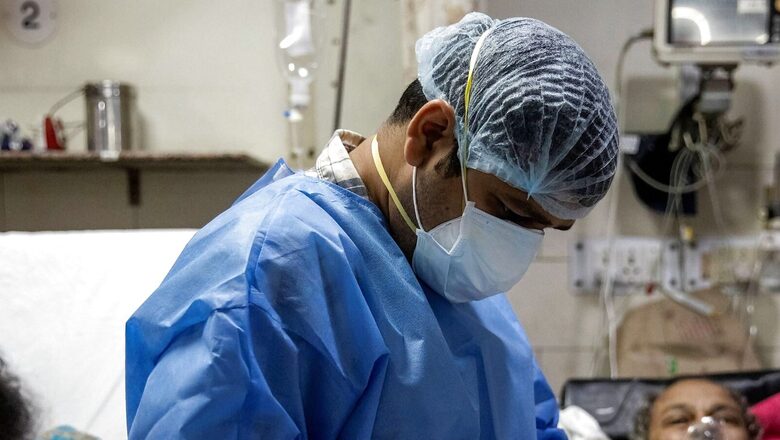
views
Infections and outbreaks used to limit life expectancy a few decades ago, but recently, the burden of non-communicable diseases (NCDs) has caused a surge in mortality globally. India’s situation is similar, with NCDs accounting for more than two-thirds of the total deaths in the country. Despite the availability of evidence which highlights the issue of escalating health and financial effects of NCDs, there has been poor implementation and slow progress in the area. The burden has been aggregating due to low diagnosis and treatment. Considering the fact that NCDs will prove to be more taxing for our healthcare system in future, there is a need to emphasise on and work towards prevention and control of NCDs.
NCDs, which encompass cardiovascular diseases, cancer, diabetes and chronic respiratory diseases, account for more than 68 percent deaths globally. NCDs are majorly increasing amongst people due to poor lifestyle, lack of physical activity and increased consumption of tobacco and alcohol. With rapid urbanisation and migration, more and more people are becoming prone to NCDs. Both outdoor and household air pollution are leading risk factors for NCDs. At all ages, males have more NCDs than females. Apart from the obvious life-threatening health impacts, the financial burden of NCDs is immense, increasing the pressure on both the patients and the families.
The percentage of deaths caused by NCDs in India is thought to have increased from 37.9 percent in 1990 to 61.8 percent in 2016, according to the government study report, “India: Health of the Nation’s States”. Since then, the trend has further worsened. According to 2021 WHO data, between the ages of 30 and 69, more than 15 million people per year die from an NCD. At least 85 percent of these “premature” deaths take place in low- and middle-income countries. Between 2010 and 2020, there were more than 44 million deaths from NCDs worldwide, with 10.4 million of those deaths occurring in South-East Asia.
India is under a tremendous disease burden of non-communicable diseases. Although the government is running the National Programme for Prevention and Control of Cancer, Diabetes, Cardiovascular disease and Stroke, the resource allocation to these diseases is minuscule. Even though health is a state subject, the Union government will also have to pitch in and shift focus towards NCDs.
The best way to reduce this huge disease burden is prevention. This can be done by focusing on primary factors: tobacco, alcohol, unhealthy diet and physical inactivity. Increasing taxes on tobacco, educating masses through awareness campaigns can turn out to be efficient strategies to accomplish this. Reduction of salt, sugar and harmful fat content in packaged food via regulation and food labelling and rating has to be included. It should be encouraged to promote low-sodium salts and low-calorie meal alternatives. An approach based on teaching children proper nutrition along with physical activity through interventions at schools is suggested.
As these diseases tend to be chronic, a focus on long-term control and reduction of harm from these diseases is needed. An increase in the number of follow-up clinics, better and earlier detection is a goal that needs to be achieved quickly. Steps need to be taken which make insulin, drugs for hypertension, heart disease more affordable to everyone. A huge reduction in respiratory NCDs can be achieved by providing cleaner cooking fuels to all. Better resource and allocation and training of healthcare workers such as ASHAs and ANMs is a mandatory step to fight NCDs.
In order to reduce the occurrence of NCDs in coming years, it is important to allocate financial, logistical and human resources across all geographies and demographics. For health policies to work on ground, it is important that they are backed with evidence and accompanied with continuous surveillance.
Mahek Nankani is Assistant Programme Manager, The Takshashila Institution. Harshit Kukreja is Research Analyst, The Takshashila Institution. The views expressed in this article are those of the authors and do not represent the stand of this publication.
Read all the Latest Opinion News and Breaking News here


















Comments
0 comment